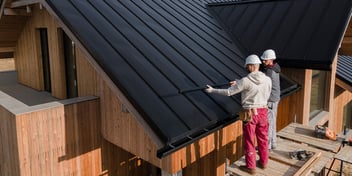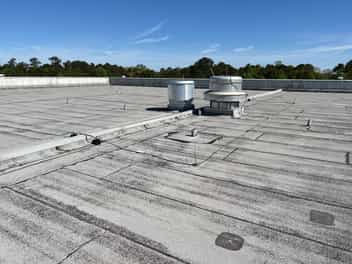- Home »
- Learningcenter »
- Tpo roofs benefits cost
TPO (Thermoplastic Polyolefin) Roofs: Benefits, Process & Cost

If you've seen a bright, white flat roof on commercial facilities or residential homes, you're probably looking at a TPO roof. This option is great if you want to replace your roof with a durable roofing system that helps keep your energy costs down and reduces strain on your cooling systems.
What exactly is TPO, though, and what are the benefits of choosing this type of roof over the other available options? What is the installation process like, and how much does a TPO roof cost?
Let's look at everything you need to know about TPO roofs to help you choose your needs, budget, and building.
What Is TPO?
Thermoplastic polyolefin (TPO) is a polymer/filler blend commonly used in outdoor applications such as roofing. One of the reasons it is a popular choice in roofing materials is that it doesn't degrade under solar UV radiation.
Commercial roofers introduced the first iteration of TPO membrane roofing in 1989, and the currently available fabric-reinforced sheets hit the market in the early '90s. TPO roofing is a single-ply membrane that quickly emerged as a popular alternative to rubber and PVC roofing products.
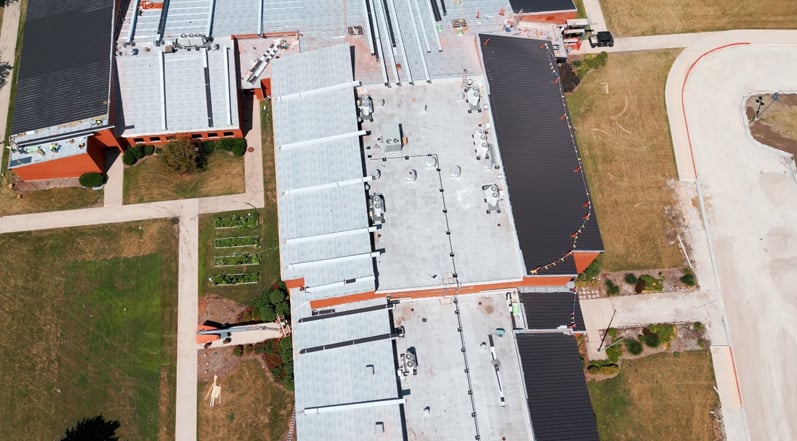
There are three layers to this single-ply roofing system, which are:
- • TPO polymer base
• Polyester-reinforced fabric center
• TPO compounded top layer
Even though there are three layers to TPO roofs, the resulting material is still remarkably thin. The thickness of TPO can range from 40 to 80 mils depending on the product you choose. The rolls of material can come in widths between six and twelve feet.
There are some differences in the construction of this material depending on the manufacturer. Common fillers include talc, fiberglass, carbon fiber, Metal Oxy Sulfate, and wollastonite.
While TPO roofs are a common choice for commercial buildings, they can also be installed on residential property. The other primary type of single-ply membrane used in commercial roofing is Ethylene Propylene Diene Terpolymer or EPDM for short. These roofing systems differ in their energy efficiency, chemical makeup, and installation process.
The Benefits of Thermoplastic Polyolefin Roofs
There are several reasons why a TPO roof system might be the right choice for your facility rather than other popular options like EPDM or PVC.
1. TPO is Durable
Of course, one of the primary things people look for when considering roofing systems is their durability. When you go through the trouble of installing a new roof, you want to know that it will withstand the elements and last long enough to be worth the investment.

TPO's durability is one of the reasons it has become so popular on flat-roof commercial buildings. On top of being resistant to the buildup of debris, dirt, algae, and bacteria, it's also quite flexible. This flexibility allows it to resist tears, punctures, and damage that could result from impacts of various kinds.
2. TPO is Affordable
When installing a new roof, the question of the cost may be high on your list. At the same time, no one wants to sacrifice quality to save a few bucks.
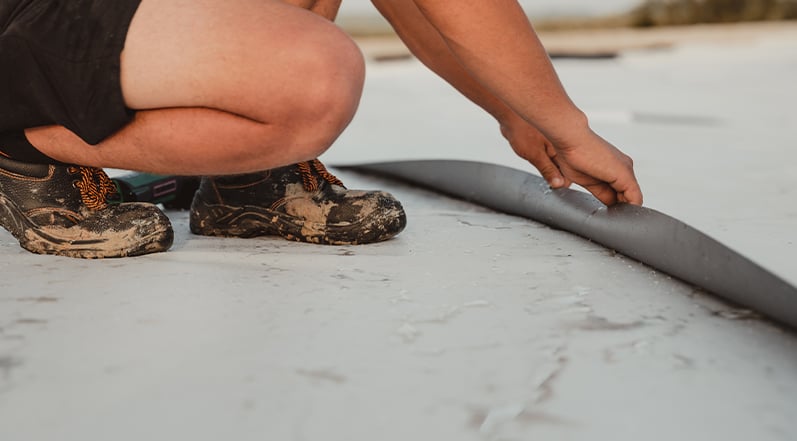
Luckily, TPO roofing systems are both affordable and durable. Cheaper than PVC but offering many of the same benefits (such as hot-air weldable seams and energy efficiency), it's no wonder many people choose TPO for new construction and flat roof replacement projects.
3. TPO is Easy to Install
TPO is also reasonably easy to install when compared to other roofing solutions. Because they are manufactured in wide sheets, there are fewer seams to deal with when installing TPO roofs. This quality means that installation takes less time and requires less work, which can save you money when you hire a commercial roofing company.

Even though the installation is relatively straightforward, hiring experts for the job is still generally recommended. Despite the lightweight nature of TPO, the wide rolls are cumbersome to move around and put in place. On top of that, specialized tools are required to do the job right – not to mention experience.
If you want to maximize the lifespan of your TPO roof, it's worth hiring professionals to complete the job for you.
4. TPO Offers Several Insulation Options
Another pro of TPO roofing is that you can choose an insulation type that fits your needs. Insulation needs to be placed before the roof is installed.
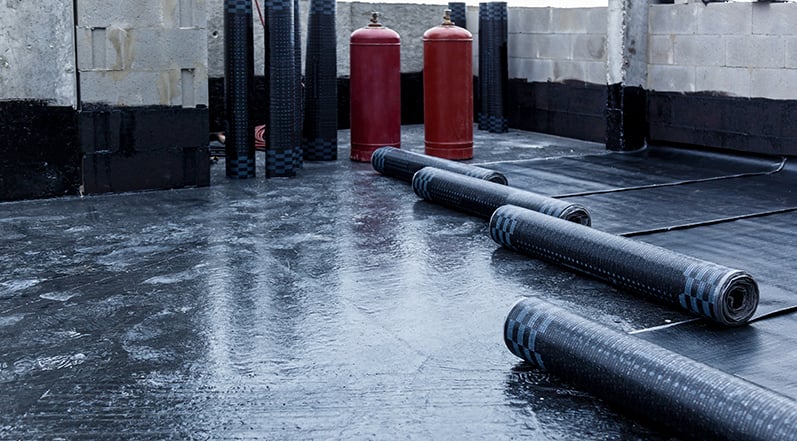
Some of the common types of insulation used under TPO roofs include:
- • Polyisocyanurate (PolyISO)
- • Expanded Polystyrene (EPS)
- • Extruded Polystyrene (XPS)
Typically, about 25% of the cost of a roofing project will be the cost of insulation. PolyISO is generally more expensive than other insulation options, but it offers a higher R-value that can save you money in the long run. XPS is often considered to fall in the middle of the spectrum between PolyISO and EPS when it comes to cost and performance, while EPS is thought by some to offer the best bang for your buck in terms of R-value per dollar.
5. TPO is Energy Efficient
Business owners and homeowners alike are attracted to TPO roof material because of its reputation for energy efficiency. Not only can a TPO roof help to keep your utility bills down, but it can also help you reduce your carbon footprint.

The reflective nature of white TPO roofs exceeds the EPA's EnergyStar standards, while several color options are listed as cool roofs with the Cool Roofing Rating Council.
Of course, when the roof is helping to make the building more energy efficient thanks to its reflectivity, this also means that you are reducing the strain on your cooling system. You can also factor in the lowered maintenance cost and increased longevity of your cooling system into the money you save with a TPO roofing system.
6. TPO is Low Maintenance
TPO is usually cheaper than EPDM roofs, requiring less maintenance and lasting longer. That being said, regular maintenance and cleaning of your roof will help to maximize its lifespan.
You can periodically reseal or recoat your roof to help extend its life. It's also a good idea to regularly clean gutter drains to reduce the occurrence of clogs and stay on top of tree pruning to decrease the probability that leaves and branches will fall on your roof.

Cleaning TPO roofs is easy – using a low-pressure power washer or strong garden hose periodically rinse off sticks, leaves, and dirt. Once you've performed a regular cleaning, it's a good idea to inspect it for wear and tear. If you believe there is a small tear or damage to your roof, it's best to repair it as soon as possible.
7. TPO is Eco-Friendly
TPO roofs are eco-friendly because they help reduce your air conditioning costs in the summer, but there are other reasons they are a good choice for people and companies looking to reduce their carbon footprint.
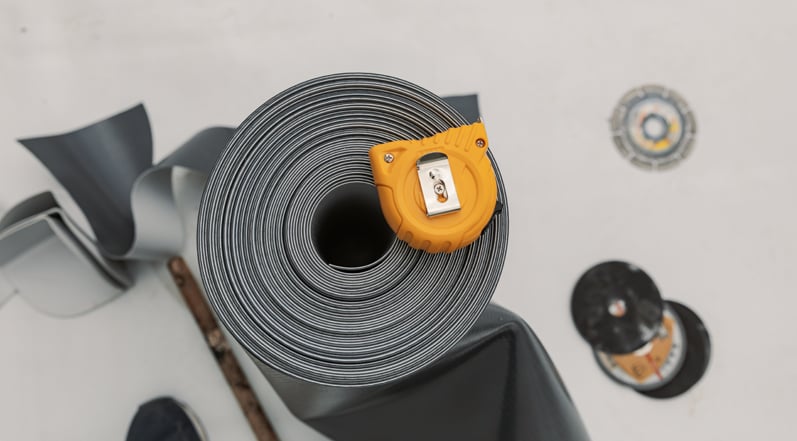
When a TPO roof reaches the end of its lifespan, it's recyclable. This quality means that it can be manufactured into a brand-new membrane, reducing the burden on our landfills and avoiding the environmental costs of producing new products.
Downsides of TPO Roofing
With any roofing product, there will be pros and cons. The key is figuring out what makes the most sense for your building, budget, and particular needs.
One thing you'll want to consider when installing a TPO roof is that there can be a substantial difference between manufacturers regarding material quality. This phenomenon has an impact on pricing, durability, and longevity. For this reason, it's a good idea to consult with commercial roofing experts about TPO manufacturers before selecting your roofing products.

Another factor you'll want to consider is installing TPO roofing in dry conditions. The reason for this is that the process of welding the seams involves heat adhesion.
Finally, while TPO can be a great solution for flat roofs, there are often better options for roofs with a high pitch.
The Cost of Installing TPO Roofing
Like most roofing materials, TPO is typically priced by squares, even though it's sold in rolls. One hundred square feet of roofing material is considered a square, and a company that offers a quote for installing or replacing a roof might offer their estimate in terms of squares.
TPO costs usually range from $3.50 to $14.00 per square foot, meaning that the price range for one square of TPO is between $350 and $1400.
You might think this is a pretty extensive range in cost, and you wouldn't be wrong. The reason why there is such a large spectrum when it comes to the price of TPO is that it is available in different thicknesses, usually spanning from 40 Mil to 80 Mil.

Of course, roofing material costs aren't the only expense when you're getting a new roof. You'll also have to factor in the cost of insulation (usually $1.50 to $3.50 per square foot,) flashing, an attachment system, and labor costs.
Let's look at the typical options and costs of each of these aspects of the process to help you estimate a ballpark figure for your new roof or roof replacement.
- • Insulation: Sometimes, the insulation price can be greater than the cost of the roofing material itself, depending on the thickness you select. In general, though, insulation for TPO roofing will run you roughly $1.50-$3.50 per square foot. Insulation will help regulate the temperature of the building, keep energy costs down, and act as a protective underlayment for the TPO.
- • Flashing: To avoid water leaks, you'll want to add flashing along corners and seams. The cost of flashing will depend on the type you choose and the specifics of your roof's dormers, peaks, chimneys, and other roof attachments. Usually, the cost of flashing is between $5 and $50 per square foot.
- • Attachment system: The cost of your attachment system will depend on whether you choose a ballasted, fastened, or attached roof and the thickness of the TPO product you select. The cost of your attachment system will typically range from $1.50 to $3.50 per square foot.
- • Installation cost: Several factors can influence the installation cost, including the contractors you hire, whether you are removing an old roof, and the accessibility of your roof. Roofing contractors commonly charge between $75 and $90 per square foot for installing a TPO roof, though these rates vary. For a straightforward roof removal job, you can estimate between $1 and $2 per square foot.
We'd love to chat with you about your project! As you can see, there are a lot of moving parts regarding how much the installation of a TPO roof costs in total. You can contact us for a free estimate if you're in the greater Atlanta area.
The Installation Process of TPO Roofing
When installing TPO roofing on a commercial or residential building, the first step is preparing the existing substrate either by removing the roof or cleaning the surface.
Once that is done, it's time to install the insulation. PolyISO is the most common type of insulation and has a higher R-value and cost than EPS and XPS.

When you hire professional roofers to perform your installation, they attach the TPO membrane to the cover board using a bonding adhesive or mechanically fastening the material. Using a hot-air gun, they will then roll out the TPO membrane and weld the seams together.
Alternatives to TPO Roofs
There are several options available for flat roofs in addition to TPO.
Another popular choice is a synthetic rubber material known as EPDM. While the cost of materials for EPDM can sometimes be cheaper than TPO, its standard black color makes it not nearly as cost-effective regarding energy efficiency.
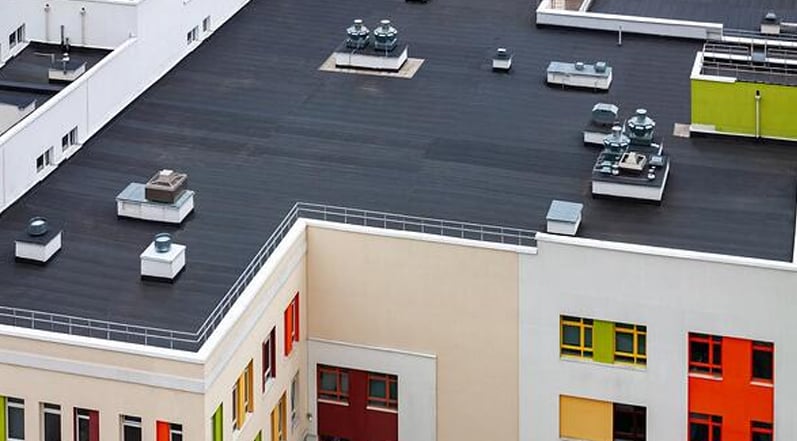
TPO comes out on top when it comes to tear strength and break strength. The other leading alternative to TPO is polyvinyl chloride (PVC). PVC is considered superior to TPO when it comes to chemical and fire resistance (though the fire resistance of TPO can vary depending on the manufacturer).
Looking For TPO Roofing Experts in the Greater Atlanta Area?
A TPO roof can help save you money both during installation and in the long run in terms of energy costs. If you're wondering whether TPO is the right choice for your building, we'd be happy to answer any questions you might have.
At Colony Roofers, we offer a full range of commercial roofing solutions, so you can rest assured that we can help you find the roofing system that is best suited for your building, budget, and needs.
For quotes on a project or to schedule a service, give us a call today at (678) 365-3138.
 Call (678) 365-3138
Call (678) 365-3138

